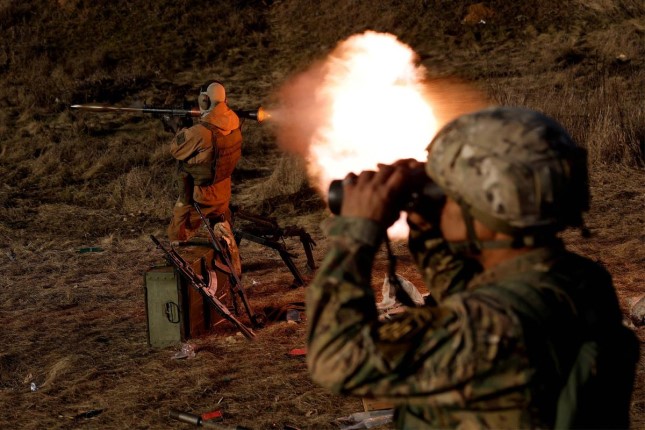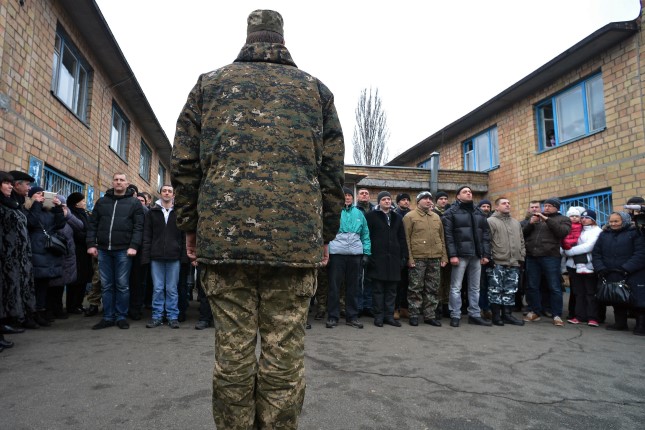In addition to strategic considerations of general nature, Russia had also had some very specific grounds for launching its special military operations. By late 2021 to early 2022, Ukraine had already started posing a clear and present threat to Russia. The scale of Kyiv's military buildup is clearly evidenced by the fierceness of resistance that Ukraine's military and its nationalist battalions put up at the time of the war's outbreak and that they continue to mount at the moment.
Simply put, Russia could no longer sit idle and just look on as a very powerful strike force was being assembled and deployed in neighboring Ukraine. Especially in view of President Zelensky's threats that he made at the Munich Security Conference by saying that Ukraine could reconsider its decision to give up its nuclear weapons.
Moreover, the scale of Ukraine's military buildup indicated that it was increasingly capable of "solving" the Donbas problem with just one massive strike. As a result, this would open up the possibility that Ukraine could next attack Crimea, considering that to this day, Ukraine has not resigned itself to losing the peninsula. With prospects like this, securing a land passage to and a security buffer for Crimea had become a matter of vital importance for Russia. This was the least to be expected.
Since this threat was perceived as absolutely credible, Moscow followed the principle first articulated in 2016 by Sergei Karaganov, honorary chairman of Russia's Council on Foreign and Defense Policy: "Russia will never again fight on its own turf!" And so it threw the first punch.
Immunity to "flagging"

Ukrainian soldier with a puppy during the fighting in the industrial area of the city of Severodonetsk. Ukraine, June 20, 2022. Photo: Reuters.
From an average person's point of view, the outbreak of hostilities came as a complete shock. Nothing seemed to portend a turn of events like this. And while it is true that a simmering conflict had been going on in the Donbas for eight previous years, it would not be immediately apparent why it should not be allowed to drag on for another eight years along the same lines.
It may appear strange when someone makes such drastic decisions based on their analysis of trends that have been in existence for years, if not decades, but that is exactly the nature of military planning that is founded on the analysis of capabilities rather than intentions. Whenever there is a risk that a likely adversary could get a decisive advantage as a result of a potential attack, military planners assume that such an attack is imminent.
The response to the outbreak of hostilities last February was emblematic of how much key international security institutions had degraded since the end of the Cold War. OSCE, the organization so many hopes had pinned on just a quarter of a century ago, is not even mentioned any more. There is neither dialogue nor trust left between Russia, on the one hand, and the US and NATO, on the other. This creates fertile ground for drastically increasing the likelihood of sudden drastic and sweeping decisions. Especially if one of the parties overestimates the degree of the influence it has over the other party.
Even the earliest days of the conflict taught us five key lessons.
- Russia regards its strategic security as an absolute priority and is prepared to act preemptively and in support of its security interests without regard to how detrimental it could be to its interests in other areas.
- Mechanisms of "verbal control", something that the West had pinned so many hopes on, have shown to have no effect on Russia. The West's extremely vigorous media campaign trumpeting Putin's upcoming invasion of Ukraine had failed to produce the desired effect of a deterrent.
- The West's economic leverage over Russia and its elites was woefully overestimated. Some of the elites the West seems to have some sway over have limited clout in Russia. It soon became very apparent that the West itself (Europe in particular) fell victim to its own measures intended to "penalize" Russia, ending up suffering much more than Russia did.
- Its policy of tolerating gung-ho nationalism and neo-Nazism in Eastern Europe that, for the longest time, seemed quite innocuous to many in Europe, has, in fact, proved to spell disaster for Europe.
- Those who have for decades sown and exploited division and discord between the countries of continental Europe, once again proved their geopolitical prowess by outplaying supporters of a united and secure Europe.
The outlook on the prospects of peace and war

Ukrainian servicemen fire from an M777 howitzer on the front line in the Kharkiv region. Ukraine, July 21, 2022. Photo: Reuters.
Trying to resume dialogue now would be extremely challenging, even when it comes to strategically important issues. This was particularly evidenced by the cancellation of plans to hold strategic security talks between Russia and the US in Egypt.
The same is true of the normalization of relations in Europe that, according to the most optimistic estimates, could take at least twenty years, judging by the time it took the USSR and European countries to do the same from the time of the crackdown on the 1956 Hungarian uprising to the signing of the Helsinki Accords in 1975. It is more likely, however, that this would not be possible at all for the foreseeable time.
All of this is making the situation very perilous. Since the start of the hostilities, the degree of antagonism has been rising steadily. Considering that the sides of the conflict have gone all-in, there is no point in hoping for a quick de-escalation.
Russia and Europe have come to a dangerous crossroads. They have to decide whether to initiate some serious talks that would inevitably call for significant concessions or to embark on a path to real remilitarization. Germany has already unveiled its plans to dramatically increase its military spending, expected to reach as much as USD 100 billion a year (versus USD 40 billion in 2014).
Overall, by 2021 NATO members had boosted their military spending to the aggregate level of 18 times that of Russia's military budget, but their ultimate goal is even more ambitious: the alliance's military spending should be 25 times that of Russia.
That said, producing and buying more weapons is just one-half of the equation. The continent's real remilitarization will require Europe to transform its social organization in the most fundamental way.
The war in Ukraine has already demonstrated how brutal and bloody a modern-day war between two industrialized nations can be. Increased military spending alone will clearly not be enough.
Main photo: View of the destroyed residential buildings in the city of Mariupol. Ukraine, April 3, 2022. Photo: Reuters.

































